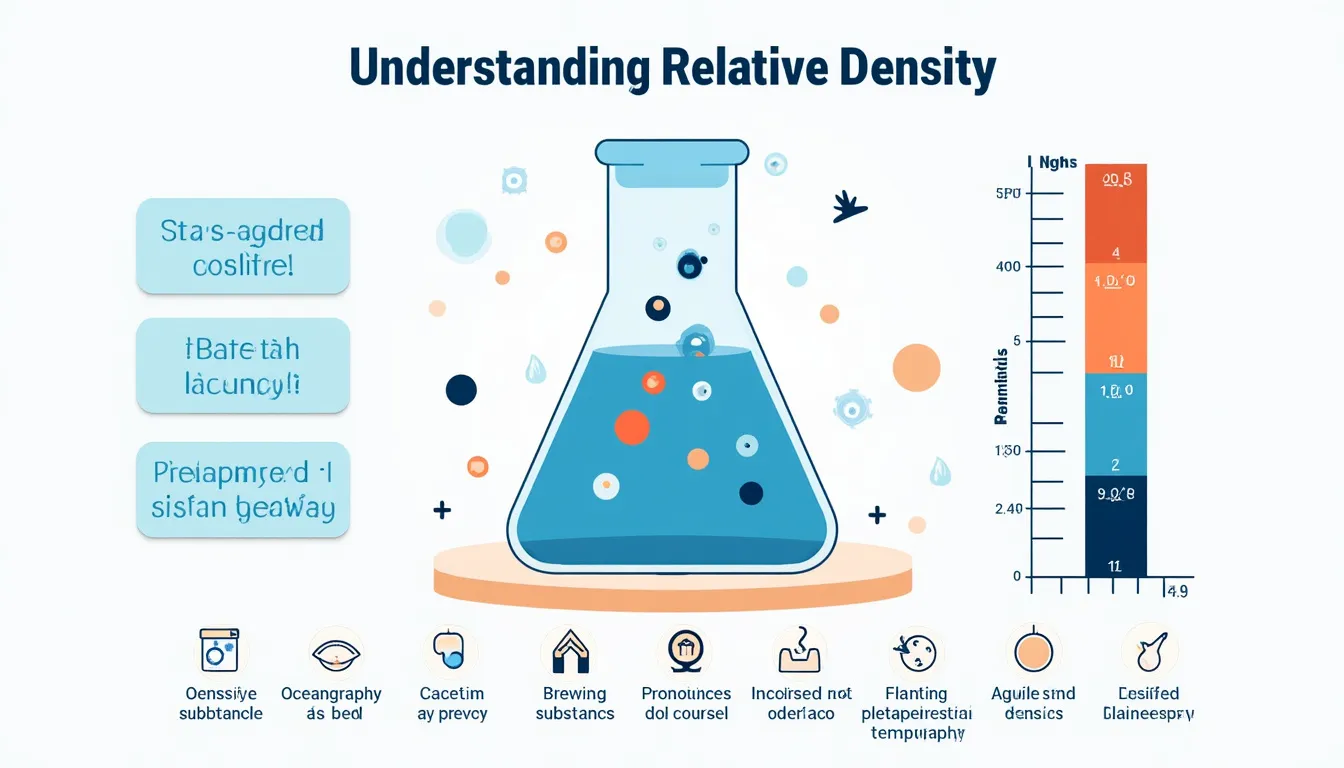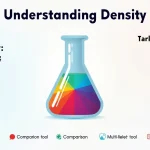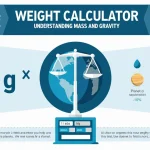Relative Density Calculator
Is this tool helpful?
How to Use the Relative Density Calculator Effectively
Our Relative Density Calculator is a powerful tool designed to help you quickly and accurately determine the relative density (also known as specific gravity) of various substances. To use the calculator effectively, follow these simple steps:
- Enter the Substance Density: In the first input field, type the density of the substance you want to compare. For example, you might enter “800” if you’re working with a substance that has a density of 800 kg/m³.
- Select the Density Unit: Choose the appropriate unit for the substance density from the dropdown menu next to the input field. You can select either “kg/m³” or “g/cm³”. For instance, if you entered “800” in step 1, you would likely choose “kg/m³”.
- Input the Reference Density (Optional): By default, the calculator uses water at 4°C (1000 kg/m³) as the reference substance. If you want to compare your substance to a different reference, enter its density in the second input field. For example, you might enter “920” if you’re comparing to a specific type of oil.
- Choose the Reference Density Unit: Similar to step 2, select the appropriate unit for the reference density from the dropdown menu.
- Calculate: Click the “Calculate Relative Density” button to obtain your result.
- View the Result: The calculated relative density will be displayed below the form, showing you how dense your substance is compared to the reference substance.
Remember, relative density is a dimensionless quantity, so the final result won’t have any units.
Understanding Relative Density: Definition, Purpose, and Benefits
Relative density, also referred to as specific gravity, is a fundamental concept in physics and chemistry that plays a crucial role in various scientific and industrial applications. It is defined as the ratio of the density of a substance to the density of a reference substance, typically water at 4°C (which has a density of 1000 kg/m³ or 1 g/cm³).
Mathematical Definition
The relative density (RD) of a substance is expressed mathematically as:
$$ RD = \frac{\rho_{substance}}{\rho_{reference}} $$Where:
- ρsubstance is the density of the substance being measured
- ρreference is the density of the reference substance (usually water)
Purpose of Relative Density
The primary purpose of relative density is to provide a standardized way of comparing the densities of different substances. This comparison is particularly useful because:
- It allows for quick and easy density comparisons without the need for specific units
- It helps in predicting whether a substance will float or sink in a given liquid
- It aids in the identification and characterization of materials
- It’s crucial in quality control processes in various industries
Benefits of Understanding and Calculating Relative Density
Grasping the concept of relative density and being able to calculate it accurately offers numerous benefits across various fields:
- Material Science: Relative density helps in the selection and design of materials for specific applications, such as in the development of lightweight yet strong materials for aerospace engineering.
- Chemical Engineering: It’s essential in designing and optimizing processes involving fluid mechanics, such as in the petroleum industry for oil extraction and refining.
- Geology and Mineralogy: Geologists use relative density to identify and classify minerals and rocks, aiding in geological surveys and mineral exploration.
- Oceanography: Understanding the relative density of seawater at different depths is crucial for studying ocean currents and marine ecosystems.
- Food and Beverage Industry: Relative density measurements are used in quality control, especially in the production of beverages like beer and wine.
- Environmental Science: It helps in studying the behavior of pollutants in water bodies and the atmosphere.
- Pharmaceutical Industry: Relative density is used in the formulation and quality control of liquid medications and solutions.
How the Relative Density Calculator Addresses User Needs and Solves Specific Problems
Our Relative Density Calculator is designed to address several key user needs and solve specific problems encountered in various scientific and industrial contexts. Let’s explore how this tool can be invaluable in different scenarios:
1. Simplifying Complex Calculations
One of the primary challenges in working with relative density is the need for accurate calculations, especially when dealing with different units of measurement. Our calculator automates this process, eliminating the potential for human error and saving valuable time.
Example Calculation:
Let’s say you’re working with a liquid that has a density of 1.25 g/cm³, and you want to compare it to water.
- Input: Substance Density = 1.25 g/cm³
- Reference Density: 1000 kg/m³ (water, default)
The calculator will automatically convert units and compute:
$$ RD = \frac{1.25 \text{ g/cm³}}{1 \text{ g/cm³}} = 1.25 $$This means the substance is 1.25 times denser than water.
2. Facilitating Material Comparisons
In materials science and engineering, comparing the densities of different materials is crucial for selecting the right material for a specific application. Our calculator makes these comparisons quick and straightforward.
Example Comparison:
Suppose you’re comparing the densities of aluminum (2.7 g/cm³) and titanium (4.5 g/cm³) to iron (7.874 g/cm³):
- For Aluminum:
- Input: Substance Density = 2.7 g/cm³
- Reference Density = 7.874 g/cm³
- Result: RD = 0.343 (aluminum is about 34.3% as dense as iron)
- For Titanium:
- Input: Substance Density = 4.5 g/cm³
- Reference Density = 7.874 g/cm³
- Result: RD = 0.571 (titanium is about 57.1% as dense as iron)
These quick calculations allow engineers to make informed decisions about material selection based on density requirements.
3. Enhancing Quality Control Processes
In industries like food and beverage production, pharmaceutical manufacturing, and chemical processing, maintaining consistent product density is crucial for quality control. Our calculator helps quality assurance teams quickly verify if products meet specified density standards.
Example in Beverage Production:
A fruit juice manufacturer needs to ensure their product has a consistent relative density of 1.045 (compared to water) for optimal taste and texture.
- Input: Substance Density = 1045 kg/m³ (the density of the juice batch)
- Reference Density: 1000 kg/m³ (water, default)
- Result: RD = 1.045
If the calculated relative density matches the target of 1.045, the batch passes the quality check. Any deviation would indicate a need for adjustment in the production process.
4. Aiding in Scientific Research and Education
For researchers and students in fields like chemistry, physics, and environmental science, our calculator serves as a valuable tool for understanding and applying the concept of relative density in various experiments and studies.
Example in Environmental Science:
A researcher is studying the stratification of a lake and measures the density of water at different depths:
- Surface water: 998 kg/m³
- Mid-depth: 999 kg/m³
- Bottom: 1001 kg/m³
Using our calculator, they can quickly determine the relative densities:
- Surface: RD = 0.998
- Mid-depth: RD = 0.999
- Bottom: RD = 1.001
These results help the researcher understand the lake’s vertical density structure and its implications for nutrient distribution and aquatic life.
Practical Applications and Use Cases of the Relative Density Calculator
The Relative Density Calculator finds applications across a wide range of industries and scientific disciplines. Let’s explore some practical use cases to illustrate its versatility and importance:
1. Petroleum Industry
In oil exploration and refining, relative density (often referred to as API gravity in this context) is crucial for characterizing crude oil and petroleum products.
Use Case: Crude Oil Classification
An oil company needs to classify a new crude oil sample. They measure its density to be 850 kg/m³.
- Input: Substance Density = 850 kg/m³
- Reference Density: 1000 kg/m³ (water, default)
- Result: RD = 0.85
This relative density can be converted to API gravity:
$$ \text{API Gravity} = \frac{141.5}{\text{RD}} – 131.5 = \frac{141.5}{0.85} – 131.5 \approx 35 $$With an API gravity of 35, this crude oil would be classified as “light crude,” influencing its market value and refining processes.
2. Brewing and Winemaking
In the alcoholic beverage industry, relative density measurements are essential for monitoring fermentation progress and determining alcohol content.
Use Case: Beer Fermentation Monitoring
A brewer takes density measurements during the fermentation process:
- Initial wort: 1.050 (relative to water)
- After one week: 1.020
- Final reading: 1.010
Using these relative density readings, the brewer can calculate the alcohol by volume (ABV):
$$ \text{ABV} = (1.050 – 1.010) \times 131.25 \approx 5.25\% $$This information helps the brewer determine when fermentation is complete and estimate the final alcohol content of the beer.
3. Gemology and Jewelry
Gemologists use relative density to help identify gemstones and distinguish between natural and synthetic stones.
Use Case: Gemstone Identification
A jeweler needs to verify if a stone is a genuine ruby or a garnet imitation. They measure its density to be 3.95 g/cm³.
- Input: Substance Density = 3.95 g/cm³
- Reference Density: 1 g/cm³ (water)
- Result: RD = 3.95
Knowing that rubies typically have a relative density between 3.97 and 4.05, while garnets range from 3.8 to 4.3, the jeweler would need to conduct additional tests to confirm the stone’s identity, as the relative density alone is not conclusive in this case.
4. Oceanography and Marine Biology
Understanding seawater density is crucial for studying ocean currents, marine life distribution, and climate patterns.
Use Case: Analyzing Ocean Stratification
A marine biologist is studying the vertical distribution of plankton in relation to water density. They measure the density of seawater at different depths:
- Surface: 1024 kg/m³
- 100m depth: 1026 kg/m³
- 500m depth: 1028 kg/m³
Using the calculator, they determine the relative densities:
- Surface: RD = 1.024
- 100m: RD = 1.026
- 500m: RD = 1.028
These subtle density differences can significantly impact plankton distribution and ocean mixing processes, providing valuable insights into marine ecosystems.
5. Pharmaceutical Industry
In pharmaceutical manufacturing, relative density is used for quality control of liquid medications and in the development of drug delivery systems.
Use Case: Liquid Medication Formulation
A pharmaceutical company is developing a new liquid antibiotic. The formulation requires a specific relative density of 1.032 for optimal stability and efficacy.
During production, they measure the density of a batch:
- Input: Substance Density = 1033 kg/m³
- Reference Density: 1000 kg/m³ (water, default)
- Result: RD = 1.033
This result indicates that the batch is slightly denser than the target formulation. The production team can use this information to make minor adjustments to achieve the desired relative density of 1.032.
Frequently Asked Questions (FAQ)
Q1: What is the difference between density and relative density?
Density is the mass per unit volume of a substance, typically expressed in units like kg/m³ or g/cm³. Relative density, on the other hand, is a dimensionless ratio comparing the density of a substance to a reference substance (usually water). While density tells you how much a specific volume of a substance weighs, relative density tells you how that substance’s density compares to water or another reference.
Q2: Why is water commonly used as the reference substance for relative density?
Water is used as the standard reference for several reasons:
- It’s abundant and easily accessible
- It has a density of 1 g/cm³ (or 1000 kg/m³) at 4°C, which simplifies calculations
- It’s a universal solvent and plays a crucial role in many scientific and industrial processes
Q3: Can relative density be greater than 1?
Yes, relative density can be greater than 1. If a substance has a relative density greater than 1, it means it is denser than the reference substance (usually water). For example, iron has a relative density of about 7.87, meaning it’s 7.87 times denser than water. Substances with relative densities greater than 1 will sink in water, while those with relative densities less than 1 will float.
Q4: How does temperature affect relative density?
Temperature can significantly affect relative density because it changes the volume of substances. Generally, as temperature increases, substances expand, decreasing their density. Since relative density is a ratio of densities, if the substance and the reference (e.g., water) expand at different rates with temperature, the relative density will change. This is why it’s important to specify the temperature when reporting precise relative density measurements.
Q5: In what industries is relative density particularly important?
Relative density is crucial in numerous industries, including:
- Petroleum and oil refining
- Brewing and winemaking
- Chemical manufacturing
- Pharmaceutical production
- Gemology and jewelry
- Oceanography and marine research
- Metallurgy and materials science
- Food and beverage production
Q6: How accurate is the relative density calculator?
The accuracy of the relative density calculator depends on the precision of the input values. The calculator itself performs exact mathematical operations, so its accuracy is primarily determined by:
- The accuracy of the density measurements you input
- The number of decimal places used in the inputs
- The consistency of units used (the calculator handles unit conversions internally)
Q7: Can I use the calculator to find the density of a substance if I know its relative density?
Yes, you can use the relative density to calculate the density of a substance if you know the density of the reference substance. Simply multiply the relative density by the reference density:$$ \rho_{substance} = RD \times \rho_{reference} $$For example, if a substance has a relative density of 1.5 (compared to water), its density would be:$$ 1.5 \times 1000 \text{ kg/m³} = 1500 \text{ kg/m³} $$This calculation assumes the reference substance is water at 4°C with a density of 1000 kg/m³.
Q8: How is relative density related to buoyancy?
Relative density is directly related to buoyancy, which is the upward force exerted by a fluid on an immersed object. The principle of buoyancy states that:
- If an object’s relative density is less than 1, it will float in water
- If its relative density is greater than 1, it will sink
- If its relative density is exactly 1, it will be neutrally buoyant (neither sink nor float)
Q9: Can relative density be negative?
No, relative density cannot be negative. Since it’s a ratio of two densities, and density itself (mass per unit volume) cannot be negative, the relative density will always be a positive number or zero. A relative density of zero would theoretically correspond to a substance with no mass, which doesn’t exist in practical terms.
Q10: How does relative density relate to specific gravity?
Relative density and specific gravity are essentially the same concept and are often used interchangeably. Both terms refer to the ratio of the density of a substance to the density of a reference substance (typically water at 4°C). The main difference is in their historical usage:
- Relative density is more commonly used in scientific contexts
- Specific gravity is often used in engineering and industrial applications
Important Disclaimer
The calculations, results, and content provided by our tools are not guaranteed to be accurate, complete, or reliable. Users are responsible for verifying and interpreting the results. Our content and tools may contain errors, biases, or inconsistencies. We reserve the right to save inputs and outputs from our tools for the purposes of error debugging, bias identification, and performance improvement. External companies providing AI models used in our tools may also save and process data in accordance with their own policies. By using our tools, you consent to this data collection and processing. We reserve the right to limit the usage of our tools based on current usability factors. By using our tools, you acknowledge that you have read, understood, and agreed to this disclaimer. You accept the inherent risks and limitations associated with the use of our tools and services.







